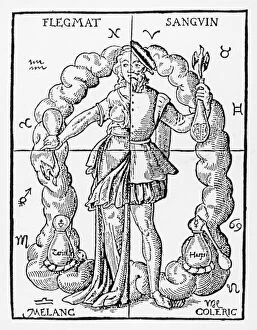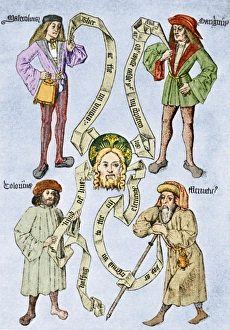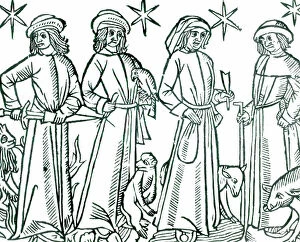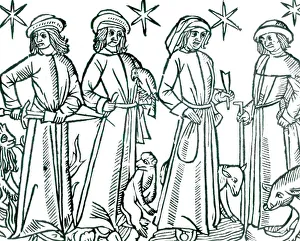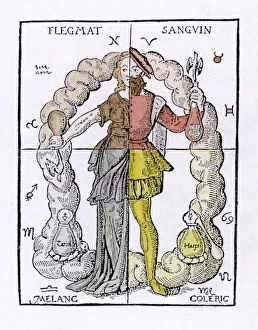Phlegmatic Collection
"Exploring the Phlegmatic: Unveiling the Water Element in Four Temperaments Artwork" Intriguingly depicted in various artworks from the 16th century
All Professionally Made to Order for Quick Shipping
"Exploring the Phlegmatic: Unveiling the Water Element in Four Temperaments Artwork" Intriguingly depicted in various artworks from the 16th century, the phlegmatic temperament takes center stage. Represented by water, this aspect of the Four Temperaments theory captivates viewers with its enigmatic nature. One such artwork is "Water (Phlegmaticus), from The Four Temperaments, " created by Zacharias Dolendo in 1596-97. This piece beautifully portrays the essence individuals through flowing streams and tranquil pools, symbolizing their calm and composed demeanor. Leonhart Thurneisser zun Thurn's "The Four Humours" further delves into this concept. With intricate illustrations, it unveils how phlegm influences one's disposition and bodily functions within the framework of humoral theory. Albrecht Durer's masterpiece "Philosophia" also contributes to our understanding personalities. Amongst a group representing all four temperaments, a serene figure emerges as an embodiment of tranquility – a true representation of those influenced by water. Hans Sebold Beham's print series executed in 1531 showcases Luna, often associated with phlegm due to its feminine qualities. This portrayal emphasizes how gender was intertwined with temperamental theories during that era. "The four humours" diagram provides visual clarity on how each temperament relates to specific bodily fluids and their corresponding animals. Here we see that phlegm aligns with coldness and moisture - characteristics attributed to water elements throughout history. Through these captivating depictions, we gain insight into how artists interpreted and conveyed the complexities of human temperament during this period. These artistic representations serve as windows into a time when understanding personality traits was intricately linked to ancient medical beliefs.

